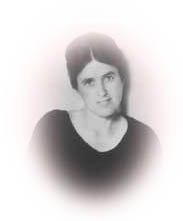Mary-Russell Ferrell Colton facts for kids
Quick facts for kids
Mary-Russell Ferrell Colton
|
|
|---|---|
 |
|
| Born | March 25, 1889 |
| Died | July 26, 1971 (aged 82) |
| Nationality | American |
| Known for | Many and diverse fields of the arts and sciences |
|
Notable work
|
|
Mary-Russell Ferrell Colton (born March 25, 1889 – died July 26, 1971) was an American artist, writer, teacher, and expert on different cultures (an ethnographer). She also helped manage museum collections as a curator. She was one of the main people who started the Museum of Northern Arizona. Mary-Russell Ferrell Colton was part of a famous group of women artists called the Philadelphia Ten. She showed her art at their yearly exhibits from 1926 to 1940. She was also a member of other important art groups, like the American Watercolor Society. She is well-known for supporting the arts, the rights of Native Americans, and women's rights. Because of her work helping Native American artists, she received a special award in 1935 from the United States Department of the Interior. In 1982, she was honored by being added to the Arizona Women's Hall of Fame.
Contents
Mary-Russell Ferrell Colton's Early Life
Mary-Russell Ferrell was born on March 25, 1889, in Louisville, Kentucky. Her parents were Joseph and Elise Ferrell. Her father, Joseph, was known as one of the first Anglo-Americans to explore Tenaya Canyon. This canyon is now part of Yosemite National Park. After her father passed away in 1904, her mother, Elise, married a businessman named Theodore Presser.
In 1904, when she was 15 years old, Mary-Russell Ferrell started studying at the Philadelphia School of Design for Women. She graduated with high honors in 1909. After finishing school, she opened her own art studio in Philadelphia. Her studio worked on projects like fixing old artworks and creating art for businesses. Besides her commercial art, Mary-Russell Ferrell also showed her paintings. She exhibited her work with the Philadelphia Ten group in many places. These included Florida, the Midwest, the Eastern United States, and even Europe.
On May 23, 1912, Mary-Russell Ferrell married Harold Sellers Colton. He was a zoology professor at the University of Pennsylvania. They had two sons together. Their first son, Ferrell, was born in 1914, and Sabin was born in 1917. Sadly, Sabin passed away in 1924. Mary-Russell and Harold remained married for the rest of her life.
Mary-Russell Ferrell Colton's Career and Contributions
In April 1926, the Coltons moved to Flagstaff, Arizona. While living there, Mary-Russell painted many scenes from the beautiful Colorado Plateau area. She also played a key role in starting the Museum of Northern Arizona. Through her writing, painting, and work as an advocate, she made big contributions. She helped with new ideas in education, supported Native American arts and crafts, and contributed to archeology.
Mary-Russell Ferrell Colton worked as the art curator for the Museum of Northern Arizona for 20 years. A curator is someone who manages a museum's collections and exhibits. She also documented the history of the Colorado Plateau through her paintings and the museum's exhibits. She wrote 21 articles and two books. As an artist and the museum's art curator, Colton often worked closely with Native American artists. Her goal was to help their amazing work get noticed and accepted by the art world around the globe.
Throughout her career, Colton painted many different things. These included landscapes, people, still life scenes (like bowls of fruit), and everyday life scenes. She is known for her sensitive portraits and her use of bright, unusual colors. The Christian Science Monitor newspaper featured her painting, Sunset on a Lava Field, in 1920. The article said that in her Arizona paintings, Mrs. Colton showed her great love for color. It also mentioned that she captured a feeling of "vast remoteness" in these western paintings, which brought her more and more recognition.
Notable Artworks
Here are some of Mary-Russell Ferrell Colton's well-known paintings:
- Church at Ranchos de Taos (around 1913)
- Edmund Nequatewa (around 1942)
- Walpi (around 1914)
- Navajo Shepardess (around 1916)
- Sunset and Moonglow (around 1917)
- Lonesome Hole (around 1929)
- Sedona From Red Ledge (around 1952)
- Sunset on a Lava Field (around 1919)
Art Exhibitions
Mary-Russell Ferrell Colton's art has been shown in special exhibits. One important exhibition was called Mary-Russell Ferrell Colton: Artist and Advocate in Early Arizona. It was shown at the Museum of Northern Arizona from June 17 to October 28, 2012. It then moved to the Desert Caballeros Western Museum in Wickenburg, Arizona, from December 14, 2012, to March 3, 2013.
Published Books and Articles
Mary-Russell Ferrell Colton also wrote many books and articles:
- Colton, Mary-Russell Ferrell. Hopi Dyes, Museum of Northern Arizona, 1965.
- Colton, Mary-Russell Ferrell and Harold Sellers. "Petroglyphs, the record of a great adventure", American Anthropologist, 1931.
- Colton, Mary-Russell Ferrell; Nonabah Gorman Bryan; Stella Young. Navajo and Hopi Dyes, Historic Indian Publishers, 1965. ISBN: 978-1-883736-08-8
- Colton, Mary-Russell Ferrell. Art for the schools of the Southwest, an outline for the public and Indian schools, Museum Bulletin, No. 6, Northern Arizona Society of Science and Art, 1934.
- Colton, Mary-Russell Ferrell and Edmund Nequatewa. Truth of a Hopi and other clan stories of Shung-Opovi, Museum of Northern Arizona. No. 8, Northern Arizona Society of Science and Art, 1947.
- Colton, Mary-Russell Ferrell. "Hopi silversmithing, its background and future", Plateau, Vol. 12, No. 1, Northern Arizona Society of Science and Art, 1939.
- Colton, Mary-Russell Ferrell. "Letter to the Editor", Coconino Sun, August 12, 1927.
- Colton, Mary-Russell Ferrell, and Harold Sellers. The Little Known Small House Ruins in the Coconino Forest, Memoirs of the American Anthropological Association Vol. 5. American Anthropological Association, 1918.
- Colton, Mary-Russell Ferrell. "Technique of Major Hopi Crafts", Museum Notes. Vol. 3, No 12. Museum of Northern Arizona, 1931.

